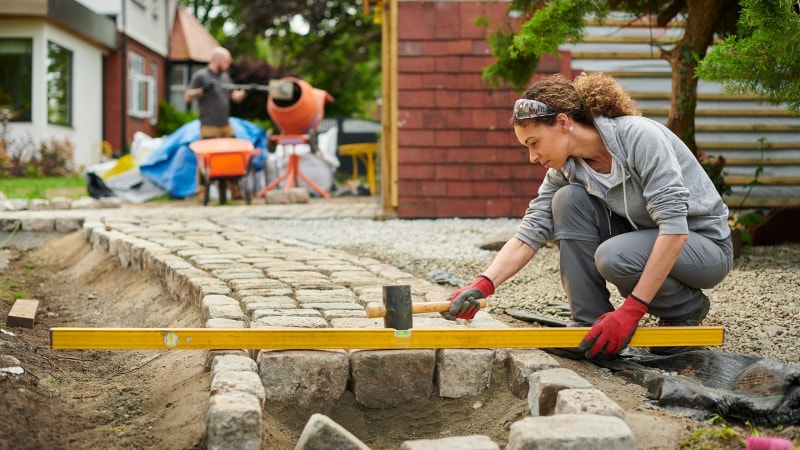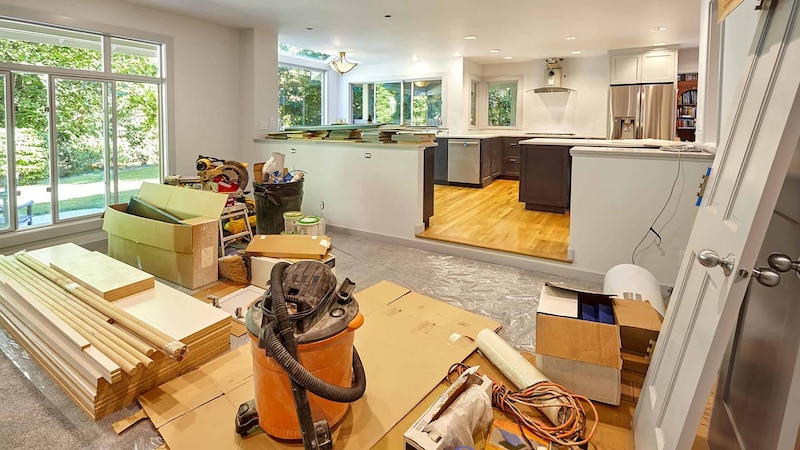Paying for emergency home repairs

This article is for educational purposes only. JPMorgan Chase Bank, N.A., currently offers home equity lines of credit (HELOCs) in select states and does not offer home equity loans in any state. Please talk with a Home Lending Advisor to see if HELOCs are available in your area. Any information described in this article may vary by lender.
Owning a home comes with a lot of freedom. Unlike renting, you get to decide everything about your property. However, when owning a home, you’re fully responsible for its maintenance and repairs. In practice, you’re your own landlord, management company and maintenance team all in one. In the event of an emergency home repair, this responsibility may quickly feel overwhelming. But with a bit of preparation and the right knowledge in your back pocket, financing emergency home repairs can potentially go from utterly daunting to downright manageable.
Preparing for home repairs
As a homeowner, upkeep is part of the job. As time goes on, your home will mature and require maintenance. This can range from issues with fixtures and appliances, to full structural repairs like a roof replacement. Whether your property is a fixer-upper or a new build, some of the most common (and often costly) emergency home repairs may include:
Roof leaks or roof damage
A roof repair could cost anywhere from a few hundred to a few thousand dollars depending on the extent of the damage. If the damage cannot be repaired, you may need a roof replacement, which is likely to cost several thousand dollars.
Plumbing issues
Plumbing issues can be anything ranging from leaky faucets and clogged sinks to backed-up sewage or burst pipes. Some of these issues are minor and may be fixed with a trip to the hardware store or a quick visit from your local plumber. However, more extensive plumbing issues (particularly those relating to the deeper piping of your home or septic system) may cost several thousand dollars to repair.
Electrical issues
Similar to plumbing, electrical issues range from minor fixes like a blown fuse to emergency repairs for faulty wiring or overloaded circuits. If you experience a power outage or dangerous electrical surges causing shocks or broken appliances, this may be grounds for an emergency repair. Costs will depend on the size of your home and the extent of the repair. The cost of completely rewiring your home will also vary depending on your home’s size and complexity, but is likely to cost multiple thousand dollars.
HVAC systems
HVAC is an acronym for your home's heating, ventilation and air conditioning system. If your HVAC goes out during extreme weather, this may require an emergency home repair. For example, if you live in a place with harsh winters and your heating system stops working before a snowstorm, you may reasonably view this as an emergency. HVAC repair costs will vary depending on the circumstances and it may be helpful to consider getting multiple quotes.
Broken windows or doors
In the event of a storm or an accident, you may experience broken windows or doors. A broken entryway into your home should almost always be fixed as soon as possible, and the price will depend on what type of window or door you have. The repair itself could be anywhere from a couple hundred to a couple of thousand dollars.
Water damage
Whether you live in a Special Flood Hazard Area (SFHA), your pipes burst or a load of laundry went awry, many homeowners deal with water damage at some point. In certain cases, it may be as simple as drying off the surfaces or replacing a carpet. In other cases, water damage could require extensive repairs, because water can lead to mold and other structural damage. Flood insurance can help offset some of these expenses, and for those living in an SFHA, it may be necessary for peace of mind.
Pest infestations
Cockroaches, bedbugs, termites, spiders and other creepy crawlers may like your home just as much as you. Depending on where you live, this may be a major concern. If you happen to find yourself with an infestation, you may need to hire an exterminator to help mitigate the issue. There are pest-control services that offer one-time treatments typically in the hundreds of dollars, while some provide ongoing services for a monthly fee.
How to pay for home repairs
Ideally, paying for home repairs would be covered by your homeowners insurance (depending on the emergency) or from a personal savings account if your policy won’t cover them. Since repairs can be costly, a personal savings account may come in handy, but there are other options to consider.
Here are a few other ways to pay for home repairs if you need further assistance covering the cost of an emergency:
Home equity loan
Either a home equity loans or a home equity line of credit (HELOC) may be used for home repairs or renovation. Lending options like these may be a nice perk of owning a home in an emergency repair scenario, because both allow you to borrow against the equity you’ve built up in your home. Home equity loans also come with predictable repayment schedules and fixed interest rates. They may also offer lower interest rates compared to other forms of borrowing, such as personal loans. Do note, however, that your home may serve as collateral if you're unable to repay your loan.
Emergency funds
Emergency funds are similar to personal savings accounts but are instead reserved for situations like an emergency home repair. If you have an emergency fund account and it outweighs other options, this may be a good time to tap into it. If you don’t have an emergency fund, don’t worry, there are other options.
Government loans or grants
There are some government programs intended to assist homeowners with costly home maintenance. Programs like these are often targeted toward specific groups, such as low-income homeowners, veterans or those living in rural areas. Many such programs are offered on a local basis, so it may be worthwhile to investigate options in your city or state before taking on a big project. Eligibility for these programs typically depends on factors such as income level, age, disability status, and location. Homeowners interested in these programs should contact their local housing authority or government office to learn more about available assistance and application procedures.
Support from friends and family
If you’re dealing with a true emergency, consider reaching out to family or friends to see if any of them can offer financial support. Keeping your home safe is important, and you may have someone willing to help with the cost of the repair.
Personal loan
A personal loan is an unsecured loan that does not require collateral. Personal loans are often used to meet unexpected costs and may be used to cover your emergency home repair. Do note that the terms of a personal loan depend on the borrower’s creditworthiness. If you’re unable to pay off a personal loan, you may end up with high interest payments that grow over time. At the time of writing, Chase does not offer personal loans.
In summary
As a homeowner, emergency home repairs are often unavoidable. The good news is there are many options available to help you cover the cost of home repairs and keep your home safe. Remember to consider the pros and cons of each approach and how it might affect your overall financial health before deciding on the path that is right for you.



